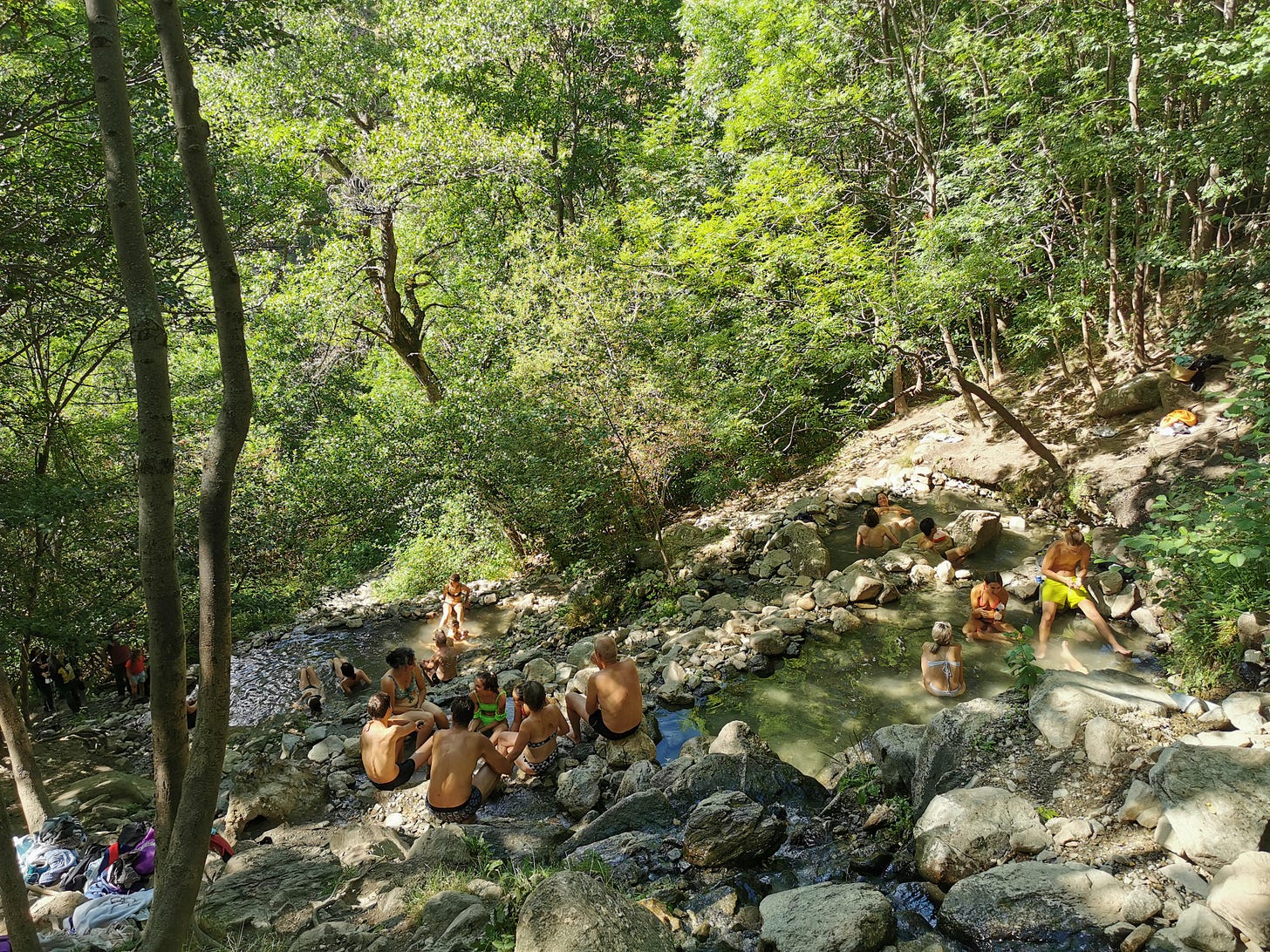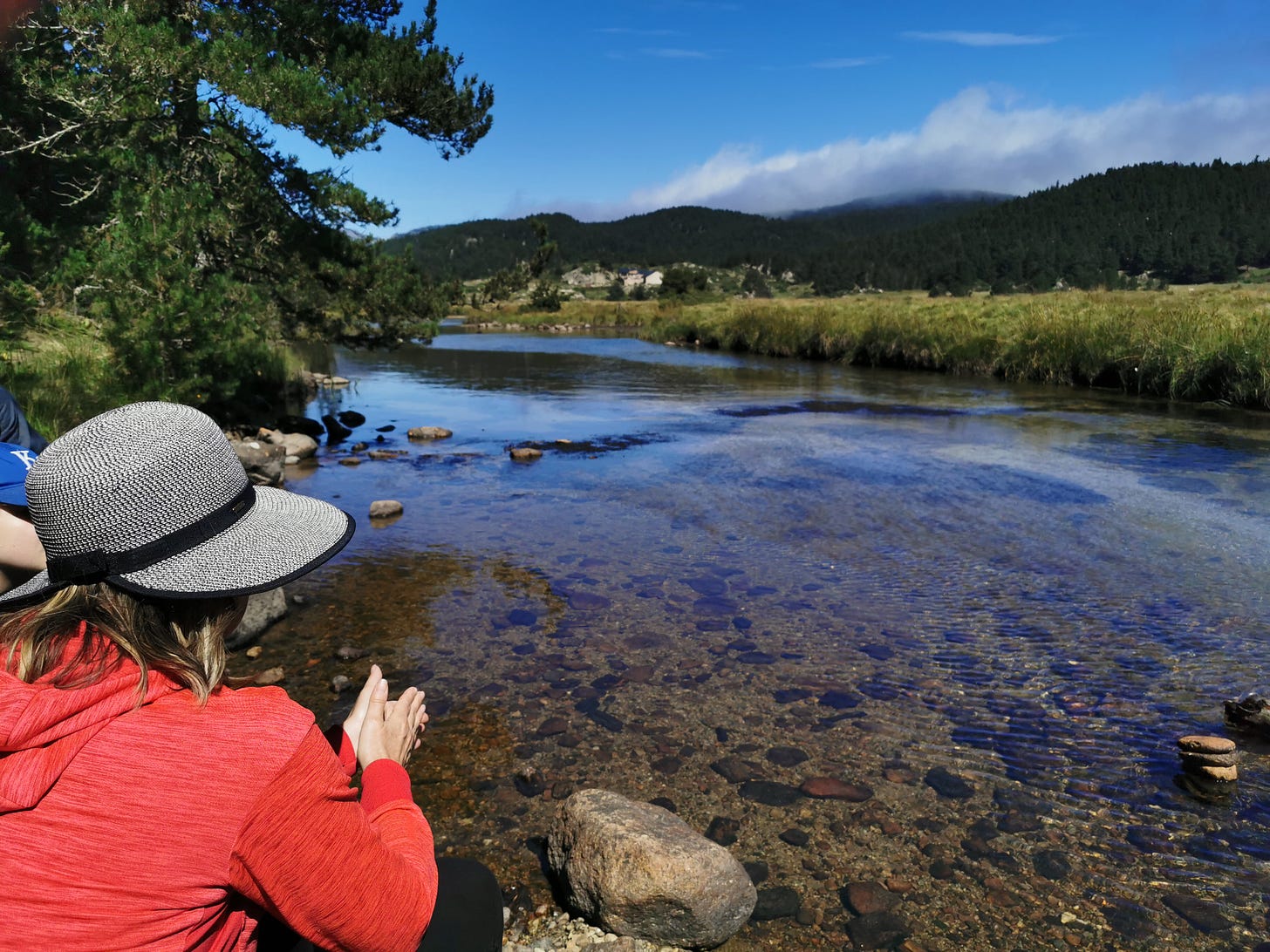France's Pyrénées-Orientales: Camping And Hot Springs Bliss
We spent 2 weeks last summer exploring Catalan Country and came away converts to its charms.
Last summer, when it seemed like France has beaten the pandemic, we slipped away for 2 weeks of vacation in the Pyrenées-Orientales. This is the department at the eastern edge of the mountain range that runs along the French and Spanish border. Known as Pays Catalan, this region retains its heavy Spanish influence.
We managed to combine 2 of our favorite things: camping and hot springs. Both have been challenging to find and understand in France in comparison to what we had in California. It turns out the Pyrenées-Orientales are the perfect destination for both.
I’ve published two stories about our trip there on We Blog The World. The first detailed out hot springs adventures:
We have visited numerous thermal bath stationsacross the Pyrénées since our family moved from the San Francisco Bay Area to Toulouse, France six years ago. But the experience has often been somewhat disappointing for a couple of reasons.
First, the French don’t like their hot springs too hot. Typically, the water is just a touch below body temperature. Not terrible, but always unsatisfying. At our favorite hot springs in California, there is a “hot pool” with water at 46 degrees celsius, and a warm pool around 38 degrees. Often, we find the water at French thermal stations to be around 34 degrees or 35 degrees.
That may seem like a small difference, but for us, it’s a yawning chasm in terms of the experience. Typically, we’ll be sitting in the water and thinking, “If they just nudged this up a couple of degrees…” Alas, no.
The other issue is that navigating the thermal station system is more complicated than one would think, though it’s for a good cause. In France, many of these thermal stations are essentially medical facilities. The country‘s health care system recognizes the health benefits of hot springs and will cover generous treatments for such ailments as arthritis that can last several weeks.
When researching a thermal station, one must ask if it’s for the “curists” or the “tourists.” If it’s for the former, you need a prescription. The websites for many of these places aren’t exactly clear on this point, since they all tend to talk about their “treatments” and their “well-being” plans. I typically have to call, and then I take the opportunity to ask about the water temperature. And then, more often than not, I sigh.
So heading to a new region and visiting its thermal stations involved a lot of research and phone calls. But the Pyrénées-Orientales offered another twist. It also is known to have several natural hot springs, places where the water emerges directly from the ground and people have built up rock enclosures to create improvised bathing experiences. The French refer to this as “eaux chaudes naturelles” or “bains chaudes sauvages.”
Whatever you call them, their locations are often referenced cryptically in various publications and blog posts. There appears to be an unspoken pact to not disclose too many details that would make them too easy to find, lest they become overrun by hordes of tourists. But the potential payoff was too tempting: The water is reportedly extremely hot. We were determined to find them.
The second story describes the camping experience and some of the other wonders we encountered. Even before the pandemic, camping was on the rise in France:
According to an annual review published by INSEE, France’s national statistics agency, camping proved to be one of the brighter spots of a difficult 2020 tourism season. The number of nights spent camping in the summer of 2020 reached 84% of France’s summer 2019 capacity. Of the international visitors who came to France last summer, almost two-thirds stayed at a campsite.
We already live in France, but we certainly saw that surge in camping demand when we decided at the last minute to take a vacation last summer. Like much of the world, we had been cooped up in our home as the pandemic raged. As July rolled around, it seemed like France had beaten the worst of it and tourism began to open up again.
With no plans, we decided to explore the Pyrénées-Orientales, the department that lies at the eastern edge of the Pyrénées Mountains along the Spanish border. This region was historically part of Spain until the Treaty of the Pyrenees in 1659 that ended the Franco-Spanish war. King Louis XIV took possession of the region while also securing his marriage to a Spanish princess.
That Spanish influence is evident everywhere in the region that proudly calls itself Catalan Country (Pays Catalan). The red and yellow Catalan flag is omnipresent, often just below the French flag.
Having decided to visit the Pyrénées-Orientales, we still had some big choices. The region is vast and varied. Because we had previously visited the beaches along the Mediterranean, we decided to stay further inland and split our stay between 2 different campgrounds so we could explore more of the terrain.
I’m not sure we’ll get back to the Pyrénées this summer. But we only scratched the surface of the Pyrénées-Orientales and it’s high on the list of places worthy of a return visit.



